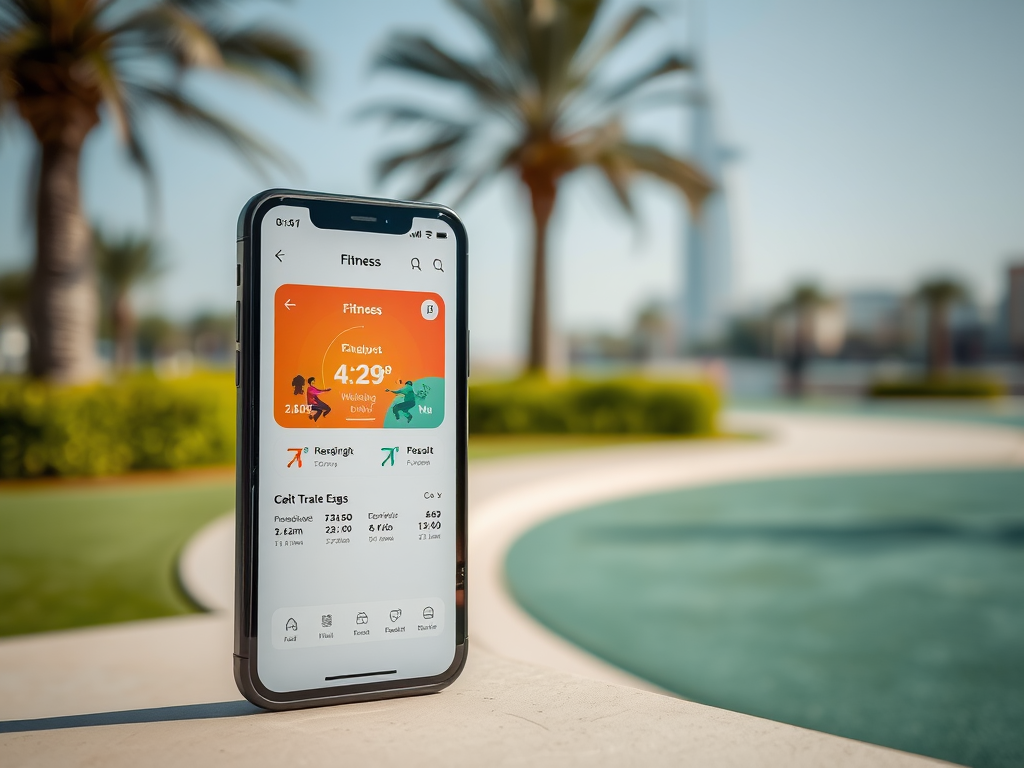Starting a subscription-based fitness app in Dubai can be a lucrative and fulfilling venture, given the city’s increasing focus on health and wellness. With the bustling expatriate community and a growing interest in fitness, aligning your app with local preferences and needs is vital. This article will guide you through the essential steps to launch your fitness app, covering everything from idea validation to marketing strategies.
Understanding the Market Demand

Before diving into app development, it’s critical to conduct thorough market research to understand the demand for your fitness app in Dubai. The fitness industry has seen remarkable growth in recent years, with a shift towards digital solutions being favored by many consumers. Here are some key aspects to consider:
- Target Audience: Identify your primary audience, whether they are fitness enthusiasts, beginners, or professionals.
- Competitor Analysis: Research existing fitness apps in Dubai to identify their strengths and weaknesses.
- Consumer Preferences: Explore local fitness trends, such as popularity in group classes, yoga, or personalized training.
- Diverse Demographics: Take into account the multicultural city of Dubai that has varying fitness expectations.
Creating a Unique App Concept

Your fitness app must stand out among competitors to capture the interest of potential subscribers. Focus on offering unique features that enhance user experience and meet identified consumer needs. Consider these innovative ideas:
- Personalized Fitness Plans: Incorporate AI algorithms that create customized workout plans based on user preferences and goals.
- Local Trainers: Collaborate with certified local fitness trainers for live training sessions and personal guidance.
- Gamification: Utilize gamification elements to encourage users to stay active and engaged.
- Nutrition Tracking: Integrate meal planning and nutrition tracking abilities to provide all-rounded health solutions.
- Community Features: Foster a community through features such as challenges, forums, and group classes.
Developing Your Fitness App
Once the concept is finalized, it’s time to move on to the development phase. This can be broken down into several key steps, ensuring a robust and user-friendly fitness app:
- Wireframes and Design: Create wireframes outlining user journey and app interface, focusing on an intuitive design.
- Choosing Technology: Decide whether to build a native app, a hybrid app, or a web app based on your budget and target audience.
- Back-End Development: Set up a reliable server to manage your app’s data, user accounts, and analytics.
- Testing: Conduct thorough testing phases to identify and rectify any bugs or performance issues.
- Launch Strategy: Plan a strategic launch that includes marketing tactics and partnership collaborations.
Implementing a Revenue Model
Consider various revenue models when developing your app, ensuring you choose one that aligns with your target market. Here are some popular strategies:
- Subscription Plans: Offer different tiers of memberships (monthly, quarterly, yearly) with varying features and benefits.
- Freemium Model: Introduce users to a basic free version of the app with options to upgrade to paid features.
- In-App Purchases: Allow users to purchase additional programs, personal training sessions, or nutrition consultations.
- Advertisements: Monetize by allowing fitness-related brands to advertise in the app.
- Partnerships: Develop partnerships with local gyms for cross-promotions and shared benefits.
Marketing and Promotion
To ensure your fitness app is successful, an effective marketing strategy is essential. Consider the following tactics to promote your subscription-based fitness app:
- Social Media Marketing: Utilize platforms like Instagram and Facebook to target fitness enthusiasts through engaging posts and ads.
- Influencer Collaborations: Partner with local fitness influencers to create buzz about your app and showcase its features.
- Content Marketing: Start a blog or YouTube channel with fitness tips, testimonials, and success stories to engage users.
- Email Campaigns: Collect leads and conduct email campaigns to keep potential users informed and excited about your launch.
- Public Events: Host fitness events or workshops in local communities to drive direct engagement and visibility.
Conclusion
Creating a subscription-based fitness app in Dubai is a promising opportunity for entrepreneurs interested in the wellness industry. By understanding the market demand, developing a unique app concept, and implementing effective marketing strategies, your app can stand out and attract a loyal user base. Remember to continually adapt and innovate in response to user feedback and evolving fitness trends to ensure lasting success.
Frequently Asked Questions
1. What should I focus on when designing my fitness app?
Focus on user-friendly navigation, visually appealing design, and engaging features that meet the needs of your target audience.
2. Is it essential to partner with local trainers for my app?
Yes, partnering with local trainers can enhance user engagement and provide personalized services that resonate with the community.
3. How can I attract users to my subscription-based model?
Offer a free trial period, create compelling content, and ensure your app provides unique value that justifies the subscription cost.
4. What are effective marketing strategies for launching my app?
Utilizing social media, influencer partnerships, content marketing, and community events are effective ways to promote your fitness app.
5. What technology platform should I use for app development?
Select the platform based on your target audience’s device preferences, budget, and the features you want to include in your app.


